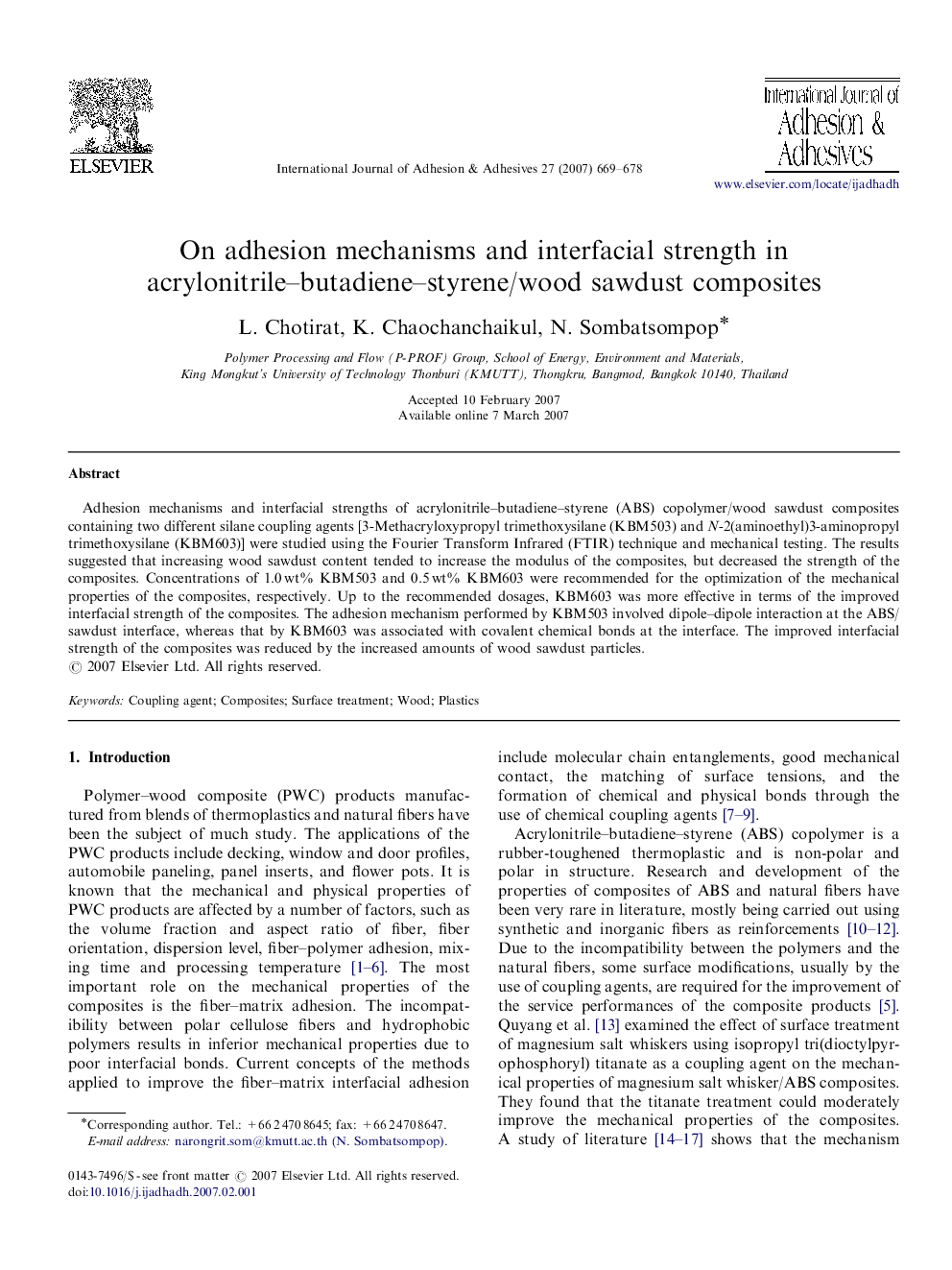| Article ID | Journal | Published Year | Pages | File Type |
|---|---|---|---|---|
| 777498 | International Journal of Adhesion and Adhesives | 2007 | 10 Pages |
Adhesion mechanisms and interfacial strengths of acrylonitrile–butadiene–styrene (ABS) copolymer/wood sawdust composites containing two different silane coupling agents [3-Methacryloxypropyl trimethoxysilane (KBM503) and N-2(aminoethyl)3-aminopropyl trimethoxysilane (KBM603)] were studied using the Fourier Transform Infrared (FTIR) technique and mechanical testing. The results suggested that increasing wood sawdust content tended to increase the modulus of the composites, but decreased the strength of the composites. Concentrations of 1.0 wt% KBM503 and 0.5 wt% KBM603 were recommended for the optimization of the mechanical properties of the composites, respectively. Up to the recommended dosages, KBM603 was more effective in terms of the improved interfacial strength of the composites. The adhesion mechanism performed by KBM503 involved dipole–dipole interaction at the ABS/sawdust interface, whereas that by KBM603 was associated with covalent chemical bonds at the interface. The improved interfacial strength of the composites was reduced by the increased amounts of wood sawdust particles.
